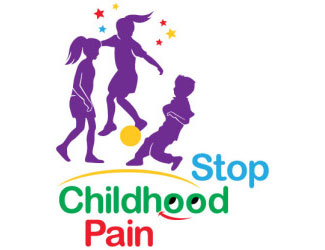The Facts About Child and Teen Fibromyalgia
There is much confusion on forums, websites, and other mediums used by both health professionals and non-health professionals regarding the diagnostic criteria for fibromyalgia (a form of diffuse amplified pain). The following criteria have been established by the American College of Rheumatology.
Adult Old Criteria
The old criteria is included here because many studies of people with fibromyalgia use this criteria. When people talk about tender points, it is these that they mean. (a. – i.1990 American College of Rheumatology Criteria for Fibromyalgia (Wolfe, Smythe et al. 1990)29
Both criteria must be satisfied
1. Widespread pain (bilateral, and above and below the waist and axial (spinal) pain) present for at least 3 months
2. Pain (not tenderness) upon digital palpation with 4 kg of pressure on 11 of the following 18 sites:
a. Occiput (base of the skull): at insertion of suboccipital muscle
b. Low cervical: at anterior aspect of the intertransverse spaces of C5-C7 (sides of the lower neck)
c. Trapezius muscle: at the midpoint of the upper borderd.
d. Second rib: just lateral to the second costochondral junction at the upper rib bordere.
e. Scapula (shoulder blade): the medial border just above the spine of the scapula
f. Lateral epicondyle (outside of elbow): 2 cm distal to the epicondyle
g. Gluteal: in the upper outer quadrant of the buttocks
h. Greater Trochanter (top of the femur): 1 cm posterior to the trochanteric prominence
i. Knees: at the medial fat pad 1 cm proximal to the joint line
Adult Current Criteria
2010 American College of Rheumatology criteria for fibromyalgia
all 3 conditions must be satisfied:
1. Absence of a disorder to explain the pain
2. Symptoms present for 3 months
3. One of the below
a. Widespread pain index ≥ 7 and symptom severity score≥ 5
b. Widespread pain index 3-6 and symptom severity score≥ 9
Widespread pain equals the number of areas of pain in the last week (0-19 points)
Areas include: shoulder girdle, upper arm, lower arm, buttocks/trochanter, upper leg, lower leg, jaw, upper back, lower back ( 1 point if unilateral; 2 points if bilateral) and 1 point each for chest, abdomen, neck
Symptom severity score (0-12)
The following 3 symptoms are scored 0 to 3 each (0 = no problem, 1 = mild or intermittent, 2 equals moderate or considerable, 3 = severe, continuous)
- Fatigue
- Waking unrefreshed
- Cognitive symptoms
Plus a somatic symptom score of 0-3 (0 = no symptoms, 1 = few symptoms, 2 = moderate number of symptoms, 3 = great deal of symptoms)
The symptoms that can be considered include: muscle pain, irritable bowel syndrome, tiredness, thinking problems, muscle weakness, headache, abdominal pain, numbness and tingling, dizziness, insomnia, depression, constipation, upper abdominal pain, nausea, nervousness, chest pain, blurred vision, fever, diarrhea, dry mouth, itching, wheezing, Raynaud phenomenon, hives, tenderness, vomiting, heartburn, oral ulcers, change in taste, seizures, dry eyes, shortness of breath, loss of appetite, rash, sensitivity, hearing difficulties, easy bruising, hair loss, urinary frequency, dysuria, bladder spasms
Adapted from: Wolf F, Clauw DJ, Fitzcharles MA, et al The American College of Rheumatology Preliminary Diagnostic Criteria for Fibromyalgia and Measurement of Symptom Severity. Arthritis Care & Research Vol. 62, No. 5, May 2010, pp 600–610 DOI 10.1002/acr.20140
Juvenile Criteria
Yunus & Masi Criteria for Childhood Fibromyalgia (Yunus and Masi 1985)25
All 4 major and 3 minor, OR the first 3 major, 4 painful sites, and 5 minor need to satisfied
Major:
- Generalized musculoskeletal aching at 3 or more sites for 3 or more months
- Absence of underlying condition or cause
- Normal laboratory tests
- Five or more typical tender points (see sites under 1990 ACR criteria above)
Minor:
- Chronic anxiety or tension
- Fatigue
- Poor Sleep
- Chronic headaches
- Irritable bowel syndrome
- Subjective soft tissue swelling
- Numbness
- Pain modulation by physical activities
- Pain modulation by weather factors
- Pain modulation by anxiety or stress
References:
Merskey, H. and N. Bogduk (1994). Classification of chronic pain: descriptions of chronic pain syndromes and definitions of pain terms. Second Edition. Seattle, IASP press.
Wolfe, F., et al. (1990). “The American College of Rheumatology 1990 Criteria for the Classification of Fibromyalgia. Report of the Multicenter Criteria Committee.” Arthritis & Rheumatism 33(2): 160-172.
Yunus, M. B. and A. T. Masi (1985). “Juvenile primary fibromyalgia syndrome. A clinical study of thirty-three patients and matched normal controls.” Arthritis & Rheumatism 28(2): 138-145.
